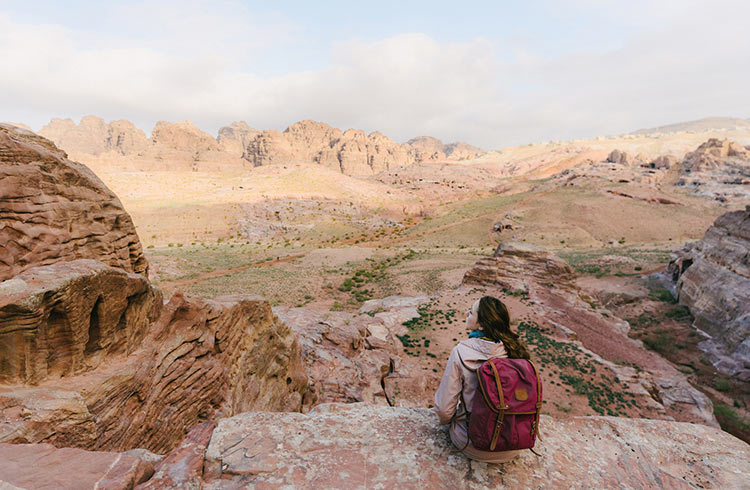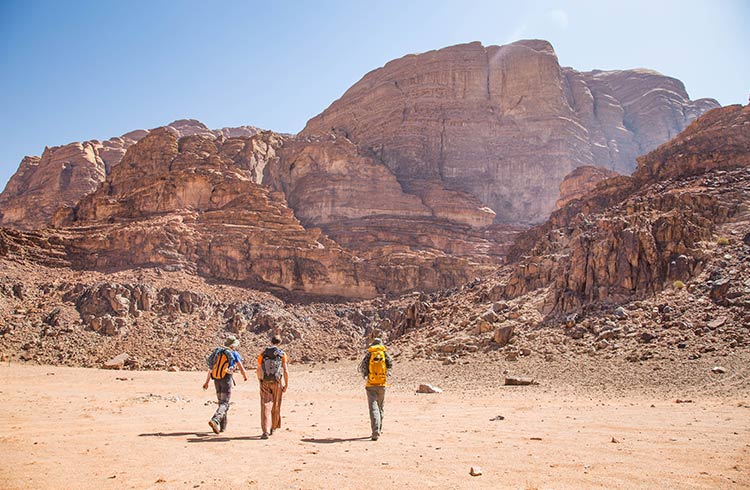How to Prepare for Jordan’s Extreme Weather
If icy mountain roads and snow falling in the capital Amman don't sound legit, here's everything you need to know about weather extremes in Jordan.
 Photo © Getty Images/inigoarza
Photo © Getty Images/inigoarza
- Temperatures and natural hazards in Jordan
- Winter travel on mountain roads
- Planning your visit to Wadi Rum
- What to pack
- The best time to visit Jordan
Temperatures and natural hazards in Jordan
Heat in the summer months (June to August) may reach up to 40ºC (over 100ºF). Drink plenty of water every day and use high-factor sun block of SPF 50+.
Sand storms and dust storms occur, particularly in summer. The rocky canyonlands see flash floods in the rainy season (between November and March).
Also be aware that Jordan is located in an active earthquake zone, and people have been killed by rock falls and landslides in the canyons. While there is no way of predicting exactly when an earthquake will happen, be aware of what to do in an emergency situation.
Winter travel on mountain roads
Despite the ferocious desert climate, be aware that mountain roads may become blocked by heavy snowfalls in winter (December and January in particular). If the conditions are super cold, it can (and does) snow in the capital Amman, when local social media accounts erupt with pictures and videos of snow blocking the streets.
Planning your visit to Wadi Rum
Time your trip to Wadi Rum carefully; you want to make sure that it's not cloudy or rainy, but not so hot that you're melting. August is the hottest month, averaging 93ºF (34ºC). For pleasant warmth and abundant sunshine, March-May and September-November is best. Rain is infrequent – most falls during the winter months, along with occasional snow.
If you're used to the four-season climates of the US and Europe, be aware that the rapidly changing extremes of this part of Jordan need respect and preparation. Temperatures drop quickly when the sun goes down.
What to pack
Come prepared for your trip to Jordan with appropriate clothing for the weather conditions expected during your visit.
If you plan on going hiking, pack breathable, mositure-wicking tops (t-shirts and long-sleeved shirts made of Merino wool are always a great option), sturdy hiking boots, and breathable pants. Pack socks that won't cause blisters for sweaty feet and long hikes.
Women should dress conservatively to avoid unwanted attention, wearing long skirts or long pants, and covering their arms and chest. It's easy to find lightweight, breathable material to stay comfortable in warmer weather. Jordan is a progressive Muslim country, and foreign women aren't expected to wear the hijab and cover their hair and faces. However, never leave the hostel with wet hair – this is considered sexual.
The best time to visit Jordan
Typically, the best time to visit Jordan for good weather and fewer crowds would be the shoulder season (September to February). Nights can be cold in the desert (and rain or snow could put a halt to pre-booked activities), but you won't be battling the crowds in the heat like you can expect during high season (March to May).
Our advice: aim for late February or early March to get the best of both worlds.
See wildflowers blooming during April in Wadi Rum, but you should expect to pay higher rates for accommodation, and book early to avoid missing out.
Related articles
Simple and flexible travel insurance
You can buy at home or while traveling, and claim online from anywhere in the world. With 150+ adventure activities covered and 24/7 emergency assistance.
Get a quote

No Comments